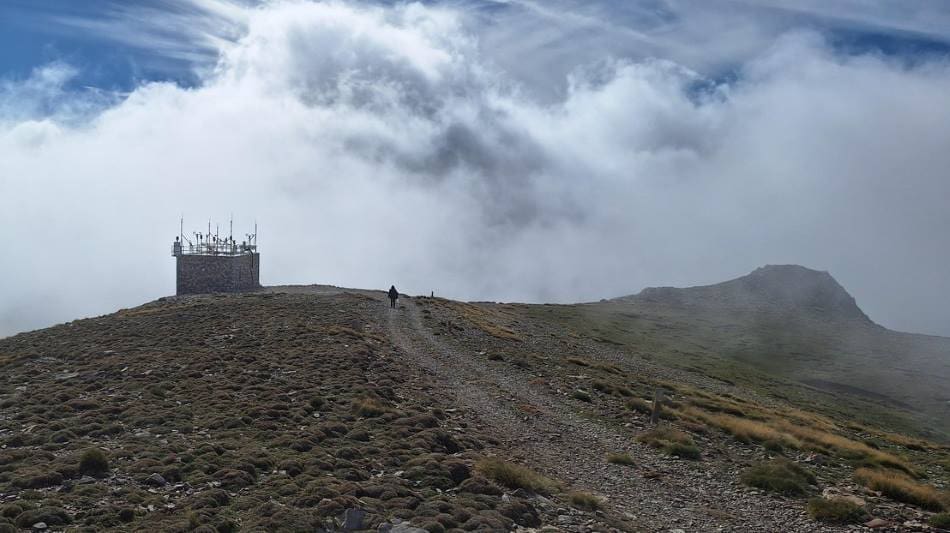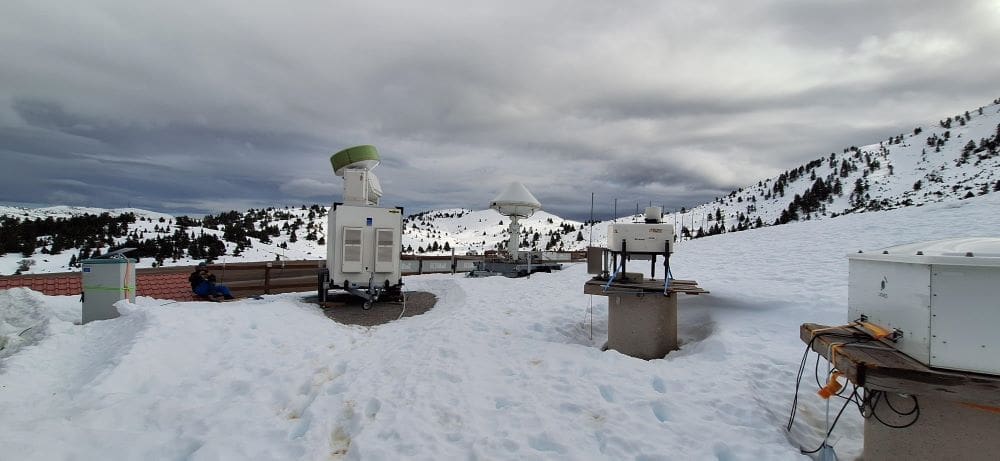Summary:
Clouds don’t form out of thin air – they need tiny particles to start the process, and new research shows that biological matter may play a far bigger role than previously understood. A study published in npj Climate and Atmospheric Science reveals that biological particles like pollen, bacteria, fungal spores, and plant debris are key drivers of ice formation in clouds, a process closely tied to precipitation and extreme weather events.
Scientists from EPFL’s Laboratory of Atmospheric Processes and their Impacts, led by Athanasios Nenes and Kunfeng Gao, examined aerosol and ice-nucleating particle (INP) data from Mount Helmos in Greece. They discovered a clear daily rhythm in the presence of INPs, peaking when temperatures rise and biological particles are released from alpine forests below. This diurnal cycle – absent in the free troposphere – indicates a strong link between local biological activity and cloud dynamics.
Current climate and weather models overlook the influence of biological particles, potentially missing critical triggers of precipitation and storm formation. As warming increases bioaerosol presence in the atmosphere, these particles may play an even larger role in shaping weather patterns. The findings point to a major gap in how atmospheric models simulate cloud and precipitation processes.

Biological particles may be crucial for inducing heavy rain
Clouds form upon existing particles in the atmosphere and extreme weather events like flooding and snowstorms are related to production of large amounts of ice in clouds. Biological particles like pollen, bacteria, spores and plant matter floating in the air are particularly good at promoting ice formation in clouds, and EPFL climate scientists show that these particles concentrations evolve as temperatures rise and fall.
“Biological particles are very effective at forming ice in clouds, and the formation of ice is responsible for most of the precipitation the planet receives worldwide, because ice falls very quickly from the sky. Intense ice formation is also associated with extreme weather,” explains Thanos (Athanasios) Nenes of EPFL’s Laboratory of atmospheric processes and their impacts, whom lead the study together with postdoctoral researcher Kunfeng Gao. “Given our findings, weather and climate models absolutely need to take biological particles into account, especially since biological particles are expected to be present in larger amounts in the atmosphere as the climate warms up.”
Indeed, current meteorological and climate models do not consider the effects of biological particles nor their cyclical nature, which means that they are potentially missing important modulators of clouds and drivers of precipitation in the current and future climate forecasts.
Mount Helmos, a case study for alpine regions
The study takes in account air samples and their biological content collected at Mount Helmos, an alpine area located in Greece. The mountain reaches an altitude of 2350 m, has frequent cloud cover throughout the year, and is influenced by biological emissions from the alpine forest below. As temperatures rise throughout the day, pollen, bacteria, fungal spores and plant matter are released from the alpine forest, culminating midday when the sun is at its highest and reaching lows during the night.
“We find that the number of particles that can nucleate ice coincides with the number of biological particle counts and they both show strongly correlated diurnal periodicity, and the increased biological particles may contribute to cloud formation that can make them precipitate,” concludes Gao.
Nenes, who participated at the IPCC scoping meeting in Malaysia to help define the chapters and shape the contents of the 7th IPCC Assessment Report, says, “the result comes with perfect timing.” As scientific coordinator of the large European project CleanCloud, Nenes is currently leading a second campaign at Mount Helmos, called CHOPIN, which benefits from even more instrumentation to help identify the types of biological particles present in the atmosphere that induce cloud droplet and ice formation.
A full suite of cloud radars, aerosol lidars, UAVs, tethered balloons and direct sampling of air (with and without clouds) is used to characterize – with unprecedented detail – how each biological particle contributes to cloud formation , and which ones are the most effective at doing so, in order to improve weather and climate predictions.
Nenes adds: “The data collected will not only be used for process understanding and model improvement, but also to improve or develop new algorithms used by satellites and ground-based remote sensing to study aerosols and clouds. We and the CleanCloud consortium as a whole will be working with the European Space Agency and our sister consortia CERTAINTY and AIRSENSE to help make the best use of the recently launched EarthCare satellite with the ultimate goal of understanding the role of aerosols on clouds and precipitation in a post-fossil world.”
Journal Reference:
Gao, K., Vogel, F., Foskinis, R. et al., ‘On the drivers of ice nucleating particle diurnal variability in Eastern Mediterranean clouds’, npj Climate and Atmospheric Science 8, 160 (2025). DOI: 10.1038/s41612-024-00817-9
Article Source:
Press Release/Material by Hillary Sanctuary | Ecole Polytechnique Fédérale de Lausanne (EPFL)
Featured image credit: EPFL | LAPI | CC-BY-SA 4.0




